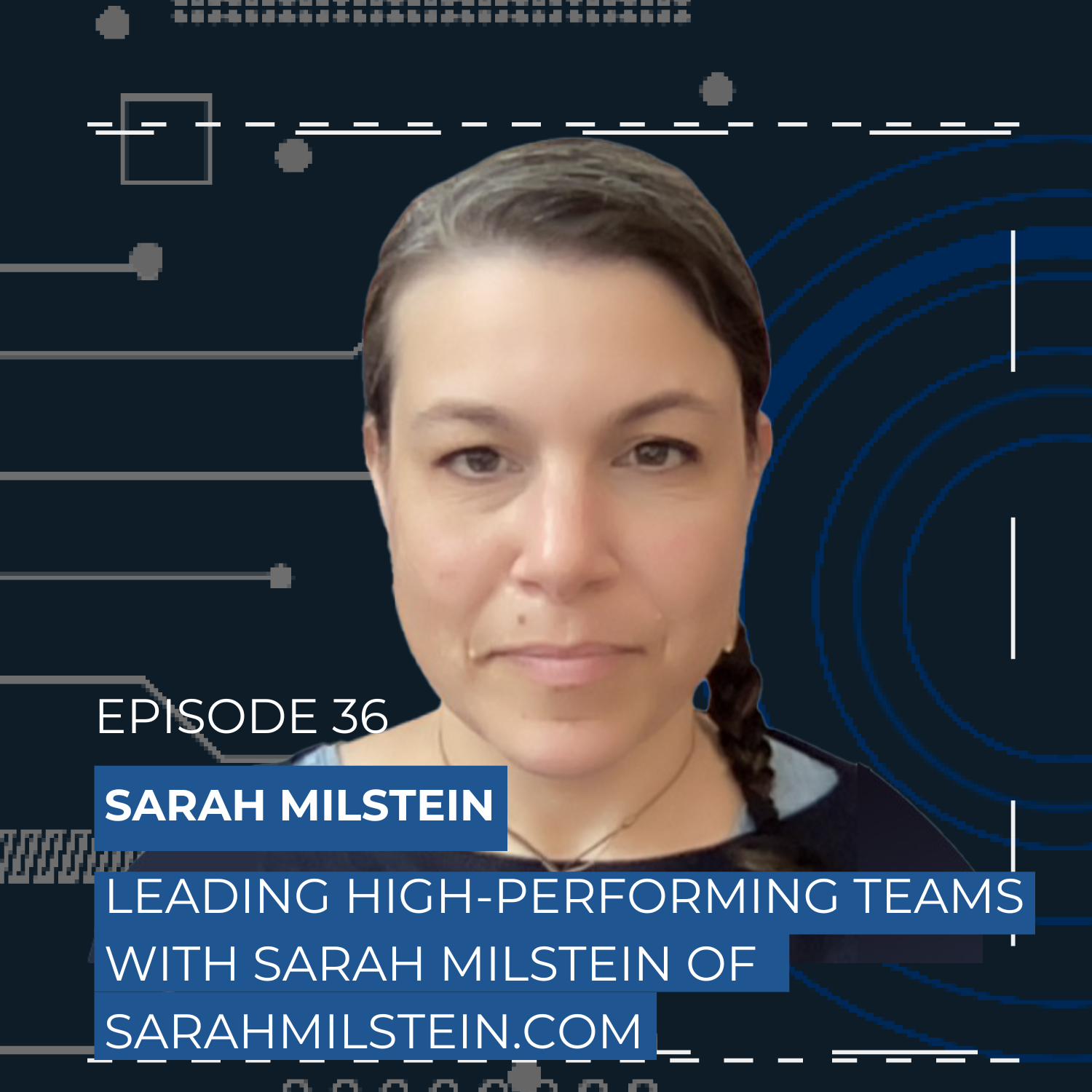
There’s no better feeling than leading a high-performing team that consistently exceeds expectations and achieves remarkable results. Sound too good to be true? It doesn’t have to be.
Today, Arin welcomes Sarah Milstein. Sarah is a seasoned leader in tech and media, with experience as VP of Engineering at Daily, ConvertKit, and in Engineering Leadership at MailChimp. She co-founded Lean Startup Productions and holds an MBA from UC Berkeley’s Haas School of Business. Sarah now offers coaching for executives and emerging leaders, helping them increase their effectiveness and job satisfaction.
In this episode of the Scaling Tech podcast, Sarah and Arin explore the essential characteristics of high-performing teams, from establishing strong team agreements to promoting trust and collaboration. They also dive into the pivotal role of an engineering manager in nurturing these teams and supporting engineers through organizational growth and change.
Discover actionable strategies for bringing out the best in your team. Join us for a fascinating discussion with Arin and Sarah!
ABOUT GUEST
Name: Sarah Milstein
What she does: She’s a Leadership Coach who helps executives and leaders increase their effectiveness and job satisfaction.
Company: SarahMilstein.com
Noteworthy: Sarah was most recently a VP of Engineering at Daily and, before that, at ConvertKit. She also worked in engineering leadership at Mailchimp.
Where to find Sarah: LinkedIn | Website
KEY INSIGHTS
⚡What makes a high-performing team? There are some common traits that set high-performing teams apart from the rest, such as clear communication, trust, and defined responsibilities. Sarah shares her perspective.
She explains, “We tend to think about it in two ways: external and internal. By external, I mean a team that can take in requests, can properly prioritize them, can gather relevant info, and then generate an answer or a project that’s appropriate for the business needs. That’s the external thing. They’ve generated something that’s appropriate for the business. But internally, a high-performing team is one that has figured out how to do those things, collaboratively and by actively drawing on the relevant expertise of the team members so that everybody is participating in a respectful and satisfying way.”
⚡Clear agreements are key for high-performing teams. High-performing teams share a common trait: strong agreements on how they operate and work together.
Sarah explains, “I think of agreements as things that, as you know, they could be explicit or could be implicit, but they are things as simple as ‘On what schedule do we meet? How do we decide on the agenda for the meetings? Who leads the meetings? How do we determine who speaks during them? How do we review each other’s work outside of the meetings?’ Things like that. Those are all team agreements, how we make decisions together. The basic internal structure of a team is the collective way that we do things. And if it’s not explicit, if people have to guess what that is, or if they’re guessing and they don’t have the same idea, then there’s a lot of opportunity for weakened trust or no trust to build. So part of what makes teams high-performing is typically they’re pretty explicit about a lot of agreements.”
⚡How to establish team agreements? The team leader is often responsible for making team agreements. Sarah suggests a practical approach to help the team work well together.
She says, “Whether it’s something small, ‘Let’s run our agenda in Notion instead of in Google Docs,’ or it’s something really big about who’s taking responsibility for what, you’re changing roles in some kind of delivery, or you are changing even how often you’re meeting or the length of time, that those things can be pretty big and if you’re changing anything that feels significant to people, you can run it as an experiment. […] If it goes sideways, we have time to check in and say, ‘Let’s ditch it. Let’s refine it. Let’s pivot into something completely different.’ But you give yourselves the space to try something, to get better information about how it’s working, and then make additional decisions.”

